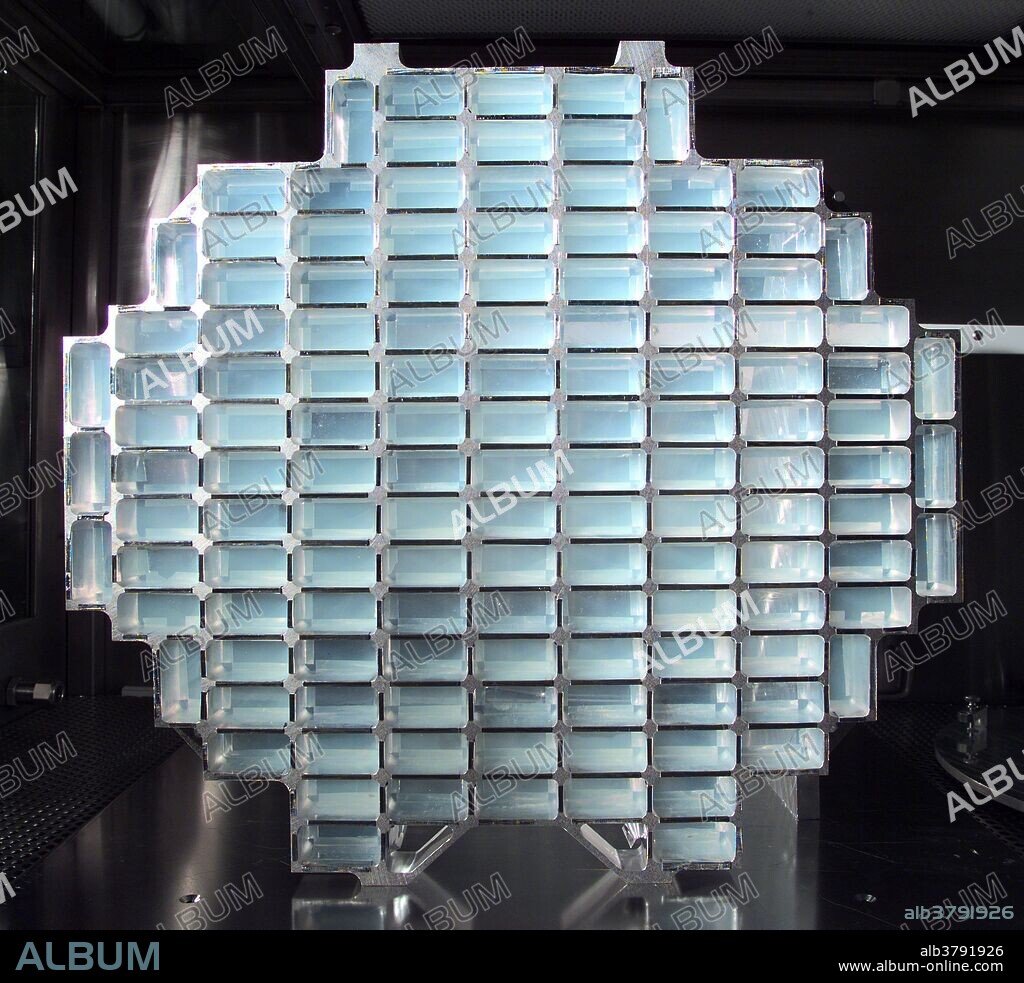alb3791926
Aerogel, Stardust Collector

|
Zu einem anderen Lightbox hinzufügen |
|
Zu einem anderen Lightbox hinzufügen |



Haben Sie bereits ein Konto? Anmelden
Sie haben kein Konto? Registrieren
Dieses Bild kaufen.
Nutzung auswählen:

Titel:
Aerogel, Stardust Collector
Untertitel:
Siehe automatische Übersetzung
The dust collectors aboard the Stardust spacecraft contained blocks of aerogel, a silicon-based solid with a porous, sponge-like structure in which 99.8 percent of the volume is empty space. The aerogel blocks cushioned the impact of the comet-dust particles, which struck at up to six times the speed of a rifle bullet. The particles are the first pieces of a comet to have ever been plucked from outer space and returned to Earth. The collection was part of the National Aeronautics and Space Administration's (NASA) Stardust sample return mission which launched in February 1999. The primary goal of Stardust was to collect dust and carbon-based samples during its closest encounter with Comet Wild 2. Samples were bombarded by the high-precision X-ray beams from the Advanced Photon Source (APS). By using the APS to map the samples, researchers hope to determine their chemical makeup and to gain a better understanding of the composition of comets and other planetary bodies, including the Earth.
Kategorie:
WISSENSCHAFT
Bildnachweis:
Album / Science Source / Argonne National Laboratory
Freigaben (Releases):
Bildgröße:
2103 x 1909 px | 11.5 MB
Druckgröße:
17.8 x 16.2 cm | 7.0 x 6.4 in (300 dpi)
Schlüsselwörter:
 Pinterest
Pinterest Twitter
Twitter Facebook
Facebook Link kopieren
Link kopieren Email
Email
